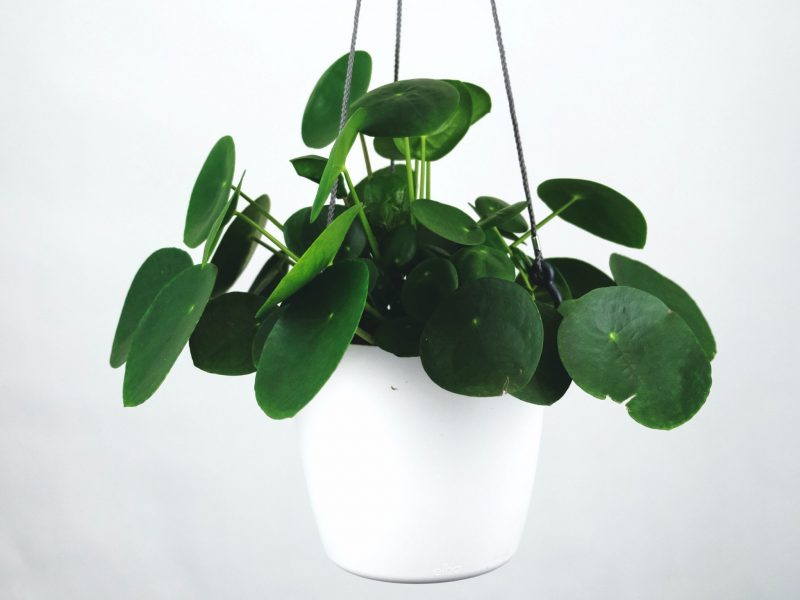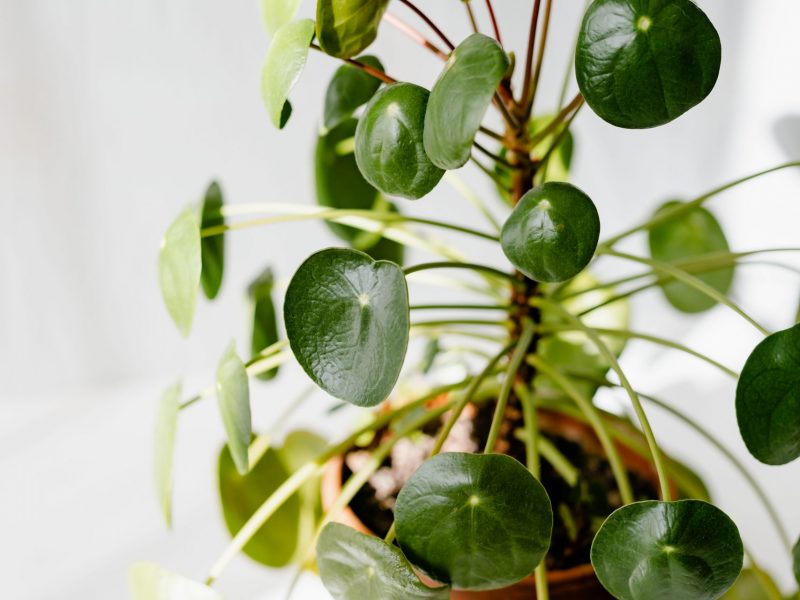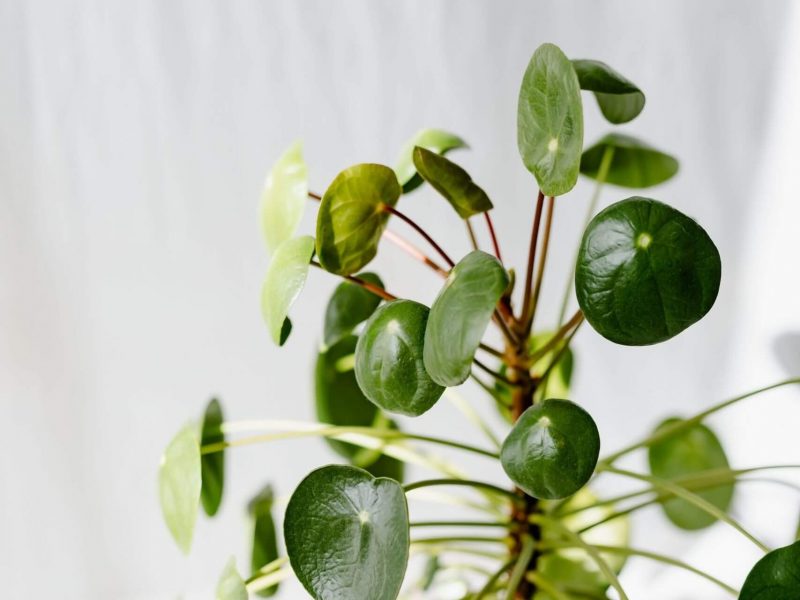
Pilea plants are one of the most popular houseplants and not just because they propagate so easily!! With their unique coin-shaped leaves, they look great in every home. But what does it mean if you Pilea starts to develop yellow leaves? Well here are the most common causes so you can hopefully diagnose the issue immediately.
Overwatering can cause yellow Pilea leaves
If the leaves on your Pilea have turned yellow you are most probably overwatering. This is one of the main problems plant parents face with all houseplants because it can often be difficult to know exactly how much water to give them.
Pilea plants don’t like to be sitting in soggy soil for too long as this can lead to root rot. Your Pilea then won’t be able to take up water or nutrients from the soil and the plant will start to become unstable and die.
If you think that your plant may be overwatered, check the moisture in the soil immediately and adjust watering accordingly. Waterlogged soil also gives off quite a damp, musty smell so make sure to check this every so often too.
As well as reducing the amount that you are watering, we also recommend replacing the potting soil straight away (rather than waiting for it to naturally dry out). This will mean the root system can start to recover straight away. At the same time as switching out the potting mix, trim away the rotten roots so that your plant can focus on producing new healthy growth.

Yellow Pilea leaves can indicate a lack of drainage
If you find that your Pilea’s soil is waterlogged but you aren’t watering it very often, drainage in the pot might be what is causing the yellow leaves. This is super easy to fix though as you can add perlite to the soil which aids not only drainage but aeration in the soil. Another easy step is to add a few small stones or pebbles to the bottom of your pots, this makes sure that the drainage holes don’t get blocked by clumps of soil.
Another great way is to swap all of your pots for terracotta ones. When you first buy a plant you will most likely get it in a plastic pot. These are great for plant shops and nurseries as they are lightweight, cheap and unbreakable. However, they retain every single drop of moisture. Terracotta ones, however, are permeable meaning moisture can escape out of the side and will prevent the soil from getting too soggy. They are definitely worth the extra money!
Leaf burn might be causing the yellow leaves
Lighting is also a really important factor to consider when caring for your Pilea. If the leaves are getting too much direct sunlight they will start to burn and you will notice yellow patches starting to develop. This is due to the intense sunlight scorching the leaves.
If this has happened to your Pilea then move it to a slightly shadier spot in the room. They like bright light but it has to be indirect. We recommend removing the scorched leaves from the plant to encourage new healthy growth (and it looks better too!).
Yellow Pilea leaves can also be caused by pests
Whilst rarer than some of the other problems, your Pilea’s leaves may be turning yellow due to a pest infestation. If you notice yellow spots forming on the leaves then it is most likely due to aphids. They usually like to hang out on the undersides of leaves which make then a little trickier to spot unless you are looking for them.
To treat aphids, spray your plant with Neem oil daily for a week. We also recommend removing the worst affected leaves to try to control the problem.
Watch out for a potassium deficiency
If your Pilea has developed yellow patches on the leaves but is not getting any direct sunlight which could be scorching them, then it may be due to a lack of potassium. It can be a little difficult to know this is definitely the problem so look over the other causes before treating this.
To treat a potassium deficiency we recommend treating with a fertiliser that is high in potassium. It won’t harm your Pilea if it technically doesn’t need it so it’s worth giving it a go if you can’t find another cause.
Natural ageing can cause the odd yellow Pilea leaf
If you have gone through all of the above but none of the causes really match what is happening with your Pilea then it may just be down to natural ageing. Over the years most of your houseplants will naturally lose a few leaves as they try to produce bigger growth. These leaves will first turn yellow before dropping off your plant.
Make sure to keep an eye on how many yellow leaves are developing and falling off. If it is only a few a year then it’s nearly always nothing to worry about. However, if the rate of yellowing increases then there may be a hidden cause. In this case, check over the other causes above to see what is wrong.
Do yellow leaves mean my Pilea is dying?
Not necessarily! It just means that your pilea isn’t liking something about its current environment or care.
Most of the time this comes down to overwatering, so keep an eye on how much you water and maybe let the soil dry out a little!
Do yellow leaves mean I have overwatered my Pilea?
Nine times out of ten this is exactly the case with pilea plants. It’s easy enough to check, just dig your finger into the soil a little bit and see how the moisture levels are!
If you are overwatering then start by letting the soil dry out a little and if that’s not fixing it then try repotting into some fresh potting soil.
Those are the most common causes which will indicate why your Pilea has yellow leaves. If you want to find out more about how to properly care for your plant then check out our Pilea care guide. We also have a downloadable ebook with all the information you’ll need to grow healthy and happy houseplants.
Complete Houseplant Care eBook
Our comprehensive (and rather good looking) eBook that will teach you everything you need to know to successfully care for, and maintain your houseplants!
Buy on













